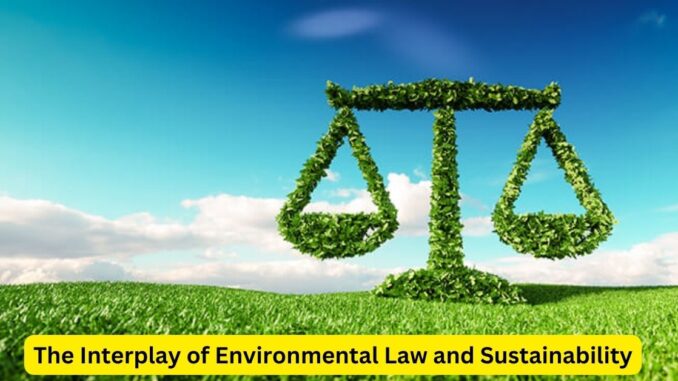
Environmental law serves as a critical framework for addressing the complex challenges posed by climate change, pollution, and the depletion of natural resources. At its core, environmental law is intrinsically linked to the pursuit of sustainability, seeking to harmonize human activities with ecological integrity. Here, we explore the symbiotic relationship between environmental law and sustainability, showcasing the vital role legal frameworks play in preserving our planet for future generations.
1. Regulatory Foundations: Environmental law provides the regulatory foundations necessary to manage and mitigate the impact of human activities on the environment. These regulations span a spectrum of issues, including air and water quality, waste management, biodiversity conservation, and land use planning. By establishing legal standards and mechanisms for enforcement, environmental law acts as a safeguard against practices that could compromise the health of our ecosystems.
2. Climate Change Mitigation: Addressing climate change is a paramount objective of both environmental law and sustainability initiatives. Legal frameworks, such as international climate agreements and national climate action plans, set targets for reducing greenhouse gas emissions and transitioning to renewable energy sources. These legal tools play a pivotal role in aligning human activities with the broader goal of environmental sustainability.
3. Conservation and Biodiversity Protection: Environmental law is instrumental in the protection of biodiversity and the conservation of natural habitats. Legislation and international conventions establish protected areas, regulate hunting and fishing practices, and promote sustainable land use to ensure the preservation of diverse ecosystems. Legal frameworks are crucial for balancing human needs with the imperative of maintaining biodiversity.
4. Waste Management and Circular Economy: Sustainable waste management is another area where environmental law intersects with sustainability. Legal measures promote the reduction, recycling, and proper disposal of waste, moving towards a circular economy model. By regulating waste practices, environmental law contributes to minimizing the environmental impact of resource consumption and waste generation.
5. Access to Environmental Justice: Environmental law empowers communities to seek justice in cases of environmental harm. The principle of environmental justice ensures that all individuals, regardless of socio-economic status, have the right to a healthy environment. Legal mechanisms allow affected communities to challenge harmful practices, fostering a more equitable distribution of environmental benefits and burdens.
6. Corporate Responsibility and Accountability: Sustainability within the business sector is increasingly shaped by environmental law. Regulations mandate corporate disclosure of environmental impacts, incentivize sustainable business practices, and hold companies accountable for environmental violations. By integrating environmental considerations into business operations, legal frameworks contribute to corporate sustainability and responsible resource management.
7. International Collaboration: Environmental challenges often transcend national borders, necessitating international collaboration. Treaties and agreements, such as the Paris Agreement on climate change, facilitate cooperation among nations to address global environmental issues. Legal frameworks foster a shared commitment to sustainability, encouraging collective efforts to tackle challenges that require a coordinated response.
8. Public Awareness and Education: Environmental law contributes to sustainability by promoting public awareness and education. Through legal requirements for environmental impact assessments, disclosure of environmental information, and public participation in decision-making processes, legal frameworks empower communities to engage in environmental stewardship. Informed and engaged citizens are essential for driving sustainable practices.
In conclusion, the relationship between environmental law and sustainability is intricate and interdependent. Legal frameworks provide the necessary structure to address environmental challenges, uphold principles of justice, and promote sustainable practices. As the global community continues to grapple with pressing environmental issues, the role of environmental law remains pivotal in shaping a future where ecological balance and human well-being coexist harmoniously.
Leave a Reply